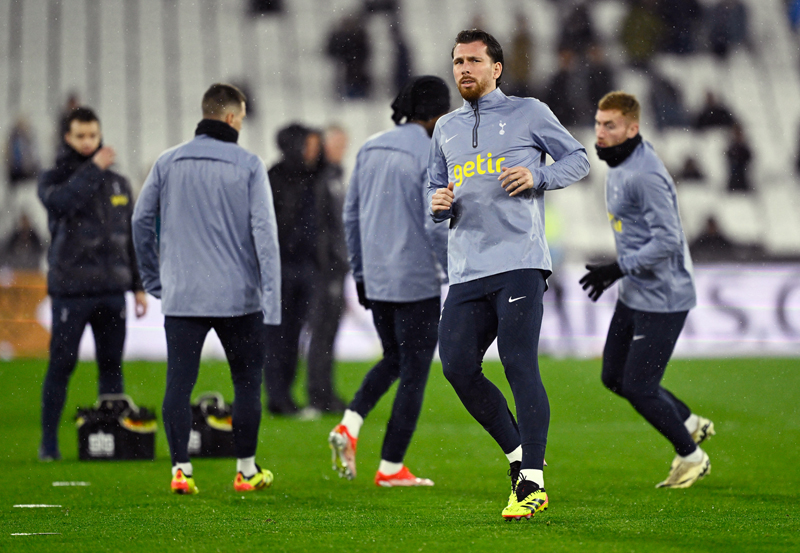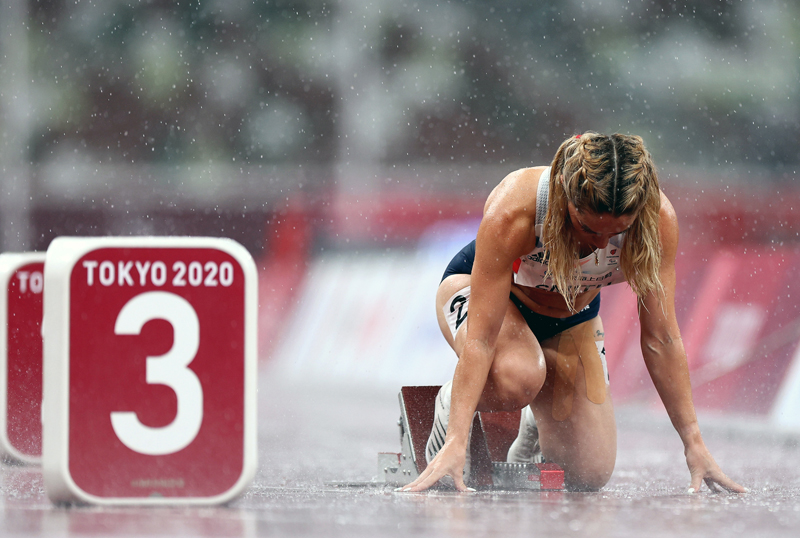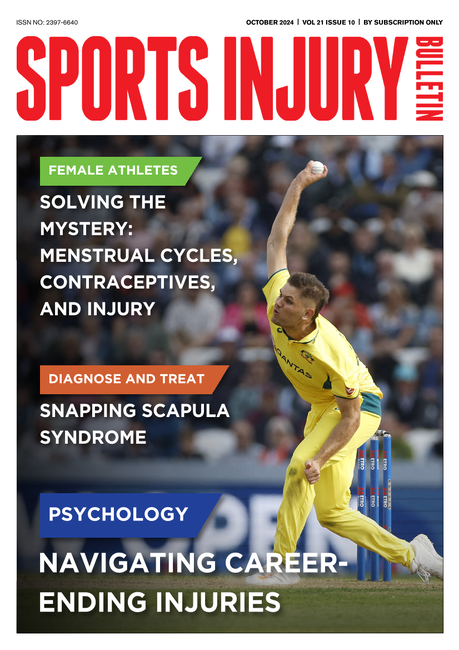Sport Psychology: the importance of attributions
How to learn from success and failure alike One of the most thought-provoking and imaginative sport psychology book titles I have seen recently is Susan Halden-Brown’s Mistakes worth making(1). For me, this title captures the essence of positive thinking and optimism, characteristics that can become important companions on the journey towards peak performance. I have always believed that occasional failures are a natural part of the learning process, since I have yet to meet a sports perform...
How to learn from success and failure alike
One of the most thought-provoking and imaginative sport psychology book titles I have seen recently is Susan Halden-Brown’s Mistakes worth making(1). For me, this title captures the essence of positive thinking and optimism, characteristics that can become important companions on the journey towards peak performance. I have always believed that occasional failures are a natural part of the learning process, since I have yet to meet a sports performer who has never experienced setbacks.
In order to learn from mistakes and failures, it is important to be able to assess what has happened objectively. But this is less easy than it sounds since the emotions connected with both success and disappointments can cloud our judgement and compromise our objectivity.
Sport psychology has often (rather unkindly in my view) been described as ‘the science of stating the obvious’, so you would think I hardly need elaborate on the importance of reflection and evaluation to the readers of Sports Performance Bulletin. When we compete against others, or against our own standards, the consequences of what sport psychologists call ‘achievement strivings’ are quite naturally going to provoke evaluation when the outcomes are very important to the individual. In such situations, people naturally strive to make sense of what has happened to them. The problem is not about persuading coaches and athletes to reflect on and evaluate their successes and failures but ensuring this is done in an objective manner.
One thing that is clear from examining the research literature is that in situations with definite outcomes (ie win/lose), our perceptions of why we either won or lost have important consequences for our affective states (eg feelings of pride, anger or shame), self-esteem, future motivations and behaviours (eg persistence)(2,3).
It is evident that different people can have widely varying perceptions about the same event or situation. If, for example, you asked a sample of football supporters why Arsenal remained unbeaten throughout the entire Premiership season of 2003-04, you would probably be treated to a wide range of opinions. Some might perceive Arsenal’s success as based on an outstanding defence, while others would cite the ability of Thierry Henry to score vital goals. If you were a Manchester United supporter, you might perceive Arsenal as simply downright lucky!
Research suggests that athletes’ methods of explaining their successes and failures are based upon their unique experiences and learned behaviours(4). The important point I am making is that individual perceptions and reality do not always match, and when emotions get thrown into the mix, perceptions and reality can be poles apart. From a psychological viewpoint, however, it is perceptions that matter most.
You will hear a wide variety of explanations for performances just by listening to the post-performance interviews that are now such a common feature of major sporting events. In psychological research, these explanations are commonly referred to as attributions – the causes or reasons behind success or failure.
Sport psychologists have been studying athletes’ attributions for more than 20 years, and various researchers have developed theoretical frameworks to enable them to study how attributions influence individual psychological states, and how individual differences predispose people to certain types of attributions of success and failure.
The four commonest attributions
One such framework was popularised by Bernard Weiner(5). Attribution theory suggests that the multitude of explanations given to explain outcomes can be condensed into just a few categories. Weiner identified ability, effort, task difficulty and luck as the four most commonly ascribed attributions. Although the model has since been extended(6), Weiner’s original two-dimensional model will suffice to demonstrate the importance of attributions (see figure 1, below).
The locus of causality referred to in the figure relates to whether the individual perceives the cause of success or failure to lie with internal (relating to oneself) or external (environment/ situational) factors. Traditionally, the locus of causality has been linked to emotions, with such attributions promoting feelings of either pride or shame associated with winning or losing(7).
However, the magnitude of the emotional response is likely to be influenced by the importance or significance of the event outcome. If, for example, a sprinter attributed winning an Olympic gold medal to the effort expended in preparation and training, this is clearly an internal attribution likely to promote feelings of considerable pride. When failure is ascribed to internal attributions – ie ‘I failed because I am not good enough’ – negative emotional states like shame are a likely consequence.
If, however, a footballer bemoans his team’s bad luck and attributes defeat to a refereeing mistake, that reflects an external attribution. These are considered less likely than internal attributions to impact on emotions, although Weiner himself suggested that ‘unstable’ external attributions of failure – such as a refereeing mistake – might promote anger (and not just among the fans!)
The stability dimension reflects the likelihood that the event will recur. A tennis player who attributes her success (eg in winning a tournament) to having the ability to stay focused under pressure is likely to be motivated by the expectation of future success, since ability is considered to be relatively stable and enduring. Unfortunately, though, when people give stable attributions for failure, the expectation is that failure will recur – a situation that can be psychologically demotivating and lead to a state of perceived helplessness.
Since the amount of effort an individual can expend in chasing success varies – given fluctuations in motivation – effort is considered an unstable attribution.
Weiner’s model has since been extended to include a third dimension of ‘controllability’ – the degree to which individuals perceive themselves as able to influence events. When success can be ascribed to factors within your own control, motivation is likely to be increased.
The model can be summarised as follows:
Stability factors influence expectation of future success;
Causality factors influence emotional responses;
Control factors influence levels of motivation.
The flow diagram above right shows the process by which people almost immediately evaluate their performance and arrive at an attribution, and how this attribution can impact on behaviours such as task persistence.
The problem of defining success
Researchers have tested Weiner’s model and the explicit predictions that accompany the model. Unfortunately, some of the instruments used to collect data on athletes’ attributions have been limited because study participants have been asked to choose ‘one main attribution’, whereas the reality is that people often give multiple interconnected reasons for success or failure(4).
Another problem concerns the concept of success, which can be difficult to define when there is no definite result. However, despite these limitations, a number of interesting findings have emerged that have implications for coaches and athletes alike.
First, although research has supported the link between the causality dimension of attritubtion and the generation of emotional responses, contemporary findings have shown that all three listed dimensions relate to emotional responses(7). For example, one study showed that the generation of more positive mood following a graded exercise test was related to personally controllable and stable attributions(8).
Secondly, perhaps the most robust findings relate to what has been termed the ‘self-serving bias’ – a tendency to attribute success to internal factors, such as ability and effort, and failures to uncontrollable external causes such as luck or weather conditions. In simple terms: when I win it’s all down to me and my efforts (good for confidence), but when I lose it wasn’t my fault (a form of ego-protection and a way to maintain self-esteem).
To illustrate the self-serving bias with regard to success, I will draw on my own experiences. A simple experiment I have conducted with undergraduate sports science students on a number of occasions makes the point quite clearly. I ask students to carry out a coin-tossing experiment in which each student is paired with an opponent and asked to predict whether the coin will land with heads or tails up on 10 occasions. Each student gets a score out of 10 and the winner is the one who predicts most accurately. This task is chosen specifically because it concerns a ‘game of chance’, and the success or failure of each individual is primarily down to luck.
Although most people call about five correct responses, there is always some variability around the mean. And a high proportion of those who ‘win’ – ie score more than five – tend to attribute success to their ability to predict, even though in subsequent attempts their fortunes will fluctuate just as much as those of all the other participants.
The existence of a self-serving bias for failure is not as well supported by research evidence(7), but it does seem to be a problem, since some people attempt to avoid personal accountability by inaccurately attributing performance declines to uncontrollable external factors. It may be that when athletes are in a predicament (need to explain failure), an easy way to avoid responsibility is to make excuses or attempt to justify the outcome as beyond their control.
One recent investigation showed that two distinct groups of elite athletes could be identified on the basis of ego-protection(9). Some athletes appeared willing to attribute failures to internal factors and take personal responsibility for setbacks. These athletes appeared to be more solution-oriented following setbacks, and looked for ways to improve and overcome problems.
An example of how setbacks can be viewed in a positive light and how personal accountability can aid future progress emerges from the case of Canadian boxer, Eric Lucas(3). Lucas lost four bouts to tough opponents during the early part of his career, but was quick to attribute each loss to a lack of experience – a factor that was clearly subject to change and could be improved by personal commitment. These losses were indeed ‘mistakes worth making’ since Lucas took personal responsibility for his losses, gained more experience and in 2001 became WBC Super Middleweight World Boxing Champion.
By contrast, a second set of elite athletes appeared to focus on external explanations for their failures (including blaming other people) and tended to over-analyse the problem rather than looking for a solution. By offloading personal responsibility, the athletes were able to protect their own self-esteem, but failed to address factors that were within their own control. Such people are likely to block their own path back to better performances.
However, other researchers have suggested that attributing failure to unstable rather than stable factors is a more commonly observed selfserving bias in sport(10). The implications of this are more positive, in that recurrence of failure would therefore not be regarded as inevitable.
My advice to coaches is: don’t let your athletes get away with faulty attributions! If you hear one of your players attributing a winning, technically correct volley in tennis to luck, you need to correct this perception straight away by drawing attention to the effort and practice that has led up to this outcome. Correcting such an attribution can help performers learn to reattribute success by acknowledging that improvements are down to effort not luck which, in turn, enhances motivation.
Research in schools has shown that teaching children to re-attribute failure to a lack of effort, rather than a lack of ability, reduces performance declines after failure(11). In sport and physical education research, re-attributional training has been shown to be equally effective(12).
When evaluating performances with your athletes, don’t just tell them what you think happened; start by asking ask what they think happened. In this exchange, you need to listen carefully for clues because some people don’t easily share their real thoughts and feelings. This is where building a strong relationship with your athletes will stand you in good stead.
The trick of remaining objective
Once you have listened to your athletes’ attributions the tricky bit is to remain objective in deciding whether those attributions match your own observations. If you feel that the athlete is using either form of self-serving bias, then your skills as a communicator will be needed to encourage re-appraisal.
As one source suggests(3), ‘coaches and sport psychologists alike serve their athletes well when they encourage a well-timed search for personal accountability and potential control, especially after setbacks are experienced’. Remind your athletes that setbacks do not necessarily have to result in reduced motivation, providing they are attributed to rectifiable deficiencies and viewed as temporary occurrences.
Pay particular attention to athletes who are self-blaming and tend to inaccurately attribute their failures to internal and stable factors, such as a lack of ability or physical capacity. In such cases, you may need to correct these attributions and make the athletes aware that problems can be solved and improvements are possible, since otherwise a negative emotional state known as ‘learned helplessness’ can ensue.
My advice to athletes is simple: after important wins or losses, take some time to reflect on what happened, but don’t do this immediately after emotionally-charged events. Seek the advice of people you trust to confirm or challenge your attributions, and then attempt to solve any problems by working on improving your performances.
Use setbacks as springboards to improvement but, conversely, don’t allow yourself to become over-confident when external factors may have contributed to your success. Your emotional state and motivation will be influenced by your attributions – so it’s well worth being objective.
Lee Crust
References
Halden-Brown S, Mistakes worth making: how to turn sports errors into athletic excellence. Champaign Illinois, Human Kinetics
Attribution research and sport psychology. In Handbook of research in sport psychology, Macmillan, 1993
Athletic-Insight: the online journal of sport psychology, vol 6 (3), 2004
Athletic-Insight: the online journal of sport psychology, vol 4 (3), 2002
Bernard Weiner, Achievement Motivation and Attribution Theory, GL, 1974
Bernard Weiner, An Attributional Theory of Motivation and Emotion, Springer- Verlag, 1986
Self-efficacy and attributional processes in physical activity. In Advances in Sport Psychology 2nd edition, Human Kinetics, 2002
Journal of Social Behaviour and Personality, vol 8, pp 729-742
The Journal of Excellence, vol 6, pp 36-47
The Journal of Personality and Social Psychology, 45, 1136-1147, 1983
The Journal of Personality and Social Psychology, 31, 674- 685, 1975
Attributions: past, present and future. In Handbook of Sport Psychology, Wiley, 2001
Newsletter Sign Up
Testimonials
Dr. Alexandra Fandetti-Robin, Back & Body Chiropractic
Elspeth Cowell MSCh DpodM SRCh HCPC reg
William Hunter, Nuffield Health
Newsletter Sign Up
Coaches Testimonials
Dr. Alexandra Fandetti-Robin, Back & Body Chiropractic
Elspeth Cowell MSCh DpodM SRCh HCPC reg
William Hunter, Nuffield Health
Keep up with latest sports science research and apply it to maximize performance
Today you have the chance to join a group of athletes, and sports coaches/trainers who all have something special in common...
They use the latest research to improve performance for themselves and their clients - both athletes and sports teams - with help from global specialists in the fields of sports science, sports medicine and sports psychology.
They do this by reading Sports Performance Bulletin, an easy-to-digest but serious-minded journal dedicated to high performance sports. SPB offers a wealth of information and insight into the latest research, in an easily-accessible and understood format, along with a wealth of practical recommendations.
*includes 3 coaching manuals
Get Inspired
All the latest techniques and approaches
Sports Performance Bulletin helps dedicated endurance athletes improve their performance. Sense-checking the latest sports science research, and sourcing evidence and case studies to support findings, Sports Performance Bulletin turns proven insights into easily digestible practical advice. Supporting athletes, coaches and professionals who wish to ensure their guidance and programmes are kept right up to date and based on credible science.









